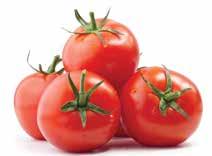TECHNICAL
HUMIDITY CONTROL IN THE GPE APPROACH Words by Elly Nederhoff : Crophouse Ltd In the new climate control, there are two separate actions: (1) preventing condensation by keeping the humidity below the dewpoint. And (2) stimulating plant transpiration by manipulating the absolute humidity of the greenhouse air. Absolute humidity, dewpoint and other units are explained below and shown in the table. Note that throughout this article ‘moisture’ means the same as ‘water vapour’.
Condensation and dewpoint
In last month’s article we introduced new energysmart approaches to greenhouse climate control, such as Growing by Plant Empowerment (GPE).* These approaches utilise refined measurements and sophisticated calculations to control heating, venting, fans and screens (as well as CO2, fogging, optionally lighting, and so on). For many growers, these systems will be too expensive, but they are useful nonetheless, as they show new directions for sustainable production. This article is again about humidity control, but now according to these new insights. As mentioned earlier, humidity control accounts for a major part of the energy consumption in greenhouses, especially in milder conditions. Only in cold weather is energy used predominantly for temperature control. Temperature will be discussed in detail in later articles.
More than relative humidity Conventional climate control aims to keep the relative humidity (RH) within a certain range, say 75–90%, for two reasons. Firstly, the RH must stay far below 100% to avoid condensation and so reduce fungal diseases. Secondly, low RH is needed to keep the plants active, i.e. to keep the transpiration going. The conventional approach of combined heating and venting does work, but is rather crude and uses a lot of energy.
52
NZGROWER : MARCH 2021
Condensation on cold plants (or parts of plants) is a problem. Plants becoming wet at night due to condensation can be avoided by keeping them warm by closing a screen (see previous article), or by avoiding too high humidity. Traditionally, condensation is prevented by keeping the relative humidity (RH) far below 100%. The new methods, however, are based on controlling the dewpoint (DP). Dewpoint is a measure of air humidity, expressed in degrees Celsius (ºC). The dewpoint tells us, at a prevailing air humidity, how cold the glass roof or a part of a plant must be to become wet from condensation. For example, if air has a temperature of 23 ºC and RH of 70%, it has a dewpoint of 17.2 ºC. This means that condensation will occur on things that are 17.2 ºC or colder, such as the glass roof. The plants are most likely above 17.2 ºC, so they stay dry. To prevent condensation, the dewpoint (humidity in ºC) of the air must be sufficiently lower than the temperature of the plants (in ºC). Dry air has a very low dewpoint. As it is unlikely that the plants will get very cold, it is unlikely they will get damp. In contrast, saturated air (with 100% RH) has a dewpoint (in ºC) as high as the air temperature (in ºC). In this very high humidity, most surfaces will get damp. Only surfaces warmer than the air will stay dry, for instance the heating pipes. Medium humid air (e.g. RH 85% and temperature 23 ºC) has a dewpoint of 20.3 ºC. Most plants will stay dry, but there can be some cold spots where the plant temperature is below the dewpoint. The plants here are at risk of condensation and infection.
Transpiration and water balance Transpiration control is different too in the new-style climate control. It does not aim for a certain relative humidity (RH), humidity deficit (HD) or vapour pressure deficit (VPD). Instead, it aims directly for a certain level of plant transpiration. To do this, the computer calculates the water balance, based on absolute humidity inside, outside,



























